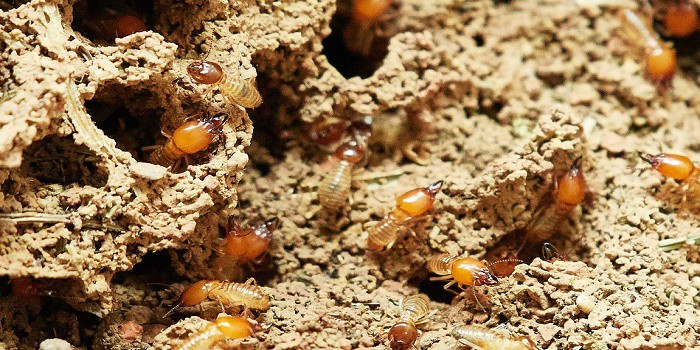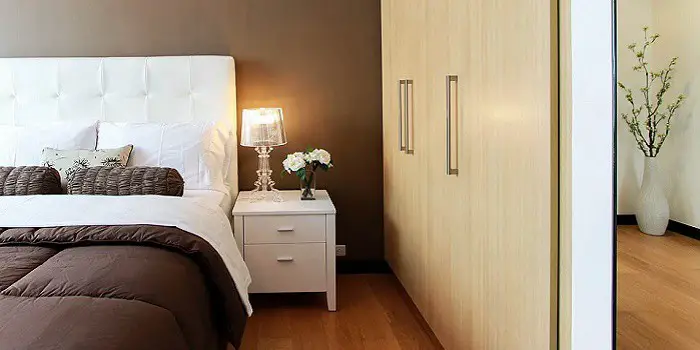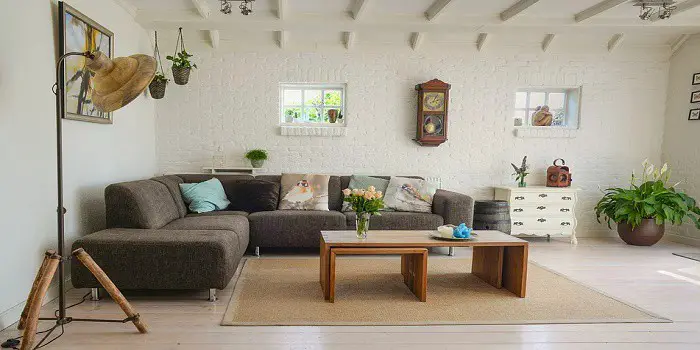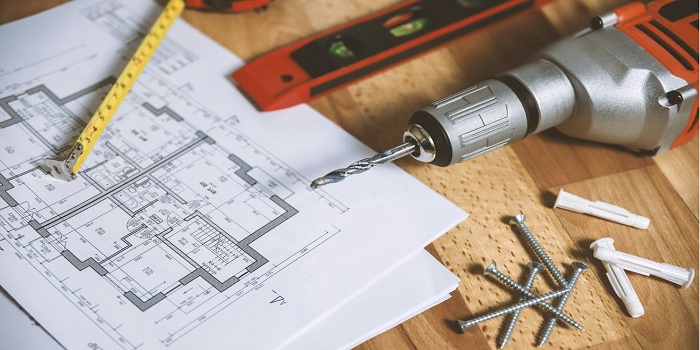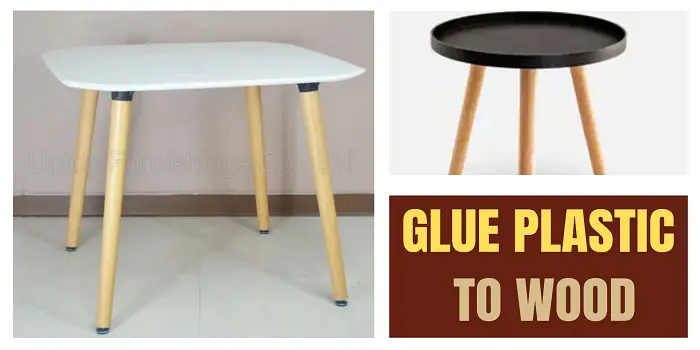
If you are working on a project that uses both wood and plastic, most likely, you’ve wondered how to connect them.
Unfortunately, drilling a few holes and attaching them mechanically with a nut, washer, and screw isn’t ideal in most applications.
Further, it may not be practical if you create a finished product like floorboards, siding, or shelving.
Instead of mechanically connecting the two materials, you will need glue to adhere one material to another. Most likely, the plastic will be going on top of the wood as a protective covering.
The order of the material is essential as you will need to know which side needs to stay untouched and which can be sanded to open the pores.
Let’s dive into the great word of multi-material adhesion.
Different Ways to Attach Plastic to Wood
Granted, there are a million ways to connect plastic to wood. However, the following methods are the most common and can be used in various projects, from small hobbies to large industrial projects.
You may find one approach more appealing than another based on your specific set of circumstances and needs.
1- Super Glue
Super glue is a well-known and prevalent form of cyanoacrylate adhesive available from all major glue brands.
The key to its popularity rests in its wide application. Super glue can be used on wood, leather, metal, glass, plastic, and ceramics.
Another advantage to superglue is its strong bond, quick curing, and clear finish. Often you want the plastic to be clear.
To use solid glue on the material, you will want the glue to dry clear. Super-hold glue gives you this advantage without staining the materials.
2- Hot Glue
Hot glue sticks are solid polymers that, when melted, bind to any material they touch. Once dry, hot glue solidifies and holds strong.
Like super glue, hot glue binds a multitude of surface types hard and fast. It needs to be heated and applied to the surface with a hot glue gun.
This is a disadvantage to some applications that may be sensitive to heat or particularly gummy materials.
So, the main difference between hot glue and other methods is the need for electricity and heat. Otherwise, hot glue dries clear quickly and holds fast.
3- Contact Cement
Contact cement is a general-purpose permanent bonding cement used in construction and other industrial applications.
It is widely used to bond many different surfaces together permanently like decorative laminates (plastics) to a substrate (wood) during the manufacturing process.
However, contact cement isn’t the traditional cement you might picture. Instead, contact cement is a neoprene rubber that is a solid mixed with a solvent.
You can paint or roll the mixture onto the surfaces. It works well for non-porous materials like plastic, as the solvent can still evaporate, creating a flexible but permanent bond.
To apply the contact cement, you need to brush the mixture onto both parts. Then you let the material dry before connecting the pieces.
4- Two-Part Epoxy
Two-part epoxies are usually sold as one unit and contain resin and a hardener.
They are excellent for home projects that involve attaching plastic to wood due to their superior strength and clear finish.
However, make sure that you purchase an all-purpose two-part epoxy as material-specific epoxies are common.
In addition, epoxies can be colored to give them a decorative or match look, depending on the project.
Epoxies work well on surfaces that may have larger gaps. The material flows and will help level the two combined surfaces.
It can act as its layer, which also binds the wood to the plastic. Because it has two parts, there is an extra step as compared to the other methods.
To use a two-part epoxy, you first need to mix the resin and the hardener. Once the material is mixed, the clocks start.
The epoxy will begin to harden. Your window for application or molding is usually only a few minutes wide.
After that, the material is rock hard, permanently.
A Few Other Alternatives
While the above are the best ways to glue wood to plastic, you can use a few other methods that might work.
You can at least try them depending on the specific conditions or if those mentioned above do not work.
These include:
a) Silicone Caulk
Silicone caulk is an alternative to other adhesives that can’t stick to the plastic to form a rigorous bond.
This can particularly work while joining hard plastics like polyethylene and polypropylene to the wood like on window trims.
Silicone caulk is generally applied using a silicone caulking gun, and it should take about 24 hours for the caulk to fully cure.
b) Polyurethane Adhesives
Polyurethane Adhesives are generally useful in bonding different surfaces like wood, glass, rubber, and metal.
They can also be used to glue wood onto plastic, but they are toxic, and they expand on the application, especially when they come in contact with moisture.
These adhesives should not be used on soft plastics or foams.
Do Not Use These Adhesives
There are a few other methods that people might suggest, but I would recommend not using them to bond plastic and wood together.
You will be just wasting your time and efforts here without getting the results.
a) Wood Glue
Wood glue is also known as polyvinyl acetate or PVA, and its primary use is in providing a robust bond when gluing porous surfaces like wood items together.
It doesn’t work well on non-porous surfaces like plastics and metal. So, better to avoid using this and choose a product that’s formulated to be used on both plastic and wood surfaces.
b) Plumber’s Glue
Plumber’s Glue or PVC cement is a product that’s mainly used in joining PVC pipes together.
It might work to glue certain wood types to plastic but not on all. Plus, it works best on rigid plastics and not flexible ones.
And, if you’re not careful in its application, it might cause the plastic to warp.
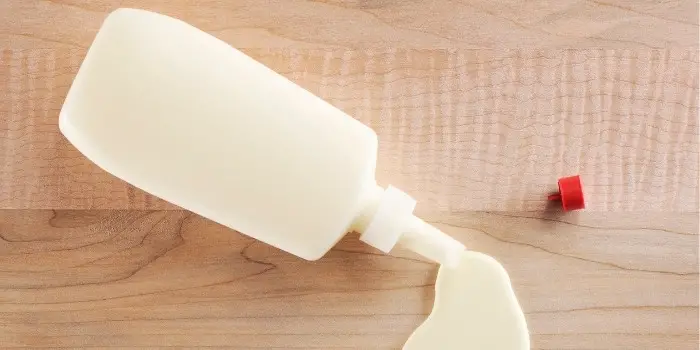
How to Prep for the Job when Gluing Plastic to Wood?
This is the critical step that most people ignore.
Before starting any adhesive project, you need to review what you are doing and what you want the end product to look like.
The worst thing you can do is use the wrong type of glue, ruin the materials and the structure, and start over from the beginning.
So here are a few questions you should ask yourself before picking glue.
- How large of an area do you need to glue?
- How heavy are the pieces?
- Should the pieces be able to hang from the glue? Or is the bond just to keep everything in place?
- Do you want the glue to occupy a thin layer, or is expansion or a thick paste acceptable?
- Will you see the edges of the materials such that you shouldn’t have anything discolored at the side?
- After applying the glue, will you still fasten the two materials together mechanically to get the strongest joint?
It suffices to say that if you combine a small piece of wood and plastic, you will need to use a different type of glue than if you are connecting a massive plastic board to a large portion of the plyboard.
The application matters. Once you’ve assessed your needs, you can start reviewing the types of glue and glue brands you want to use.
A few manufacturers that worked great for me in the past include Loctite, Elmers, Tombow, Avery, and Scotch.
Tips and Precautions
You should always wear protective equipment when there is a risk of exposure to hazardous materials, including toxic chemicals.
These glues may irritate the skin if exposed.
Further, you may glue yourself to yourself. The best practice is to wear plastic gloves and work in a well-ventilated area or outdoors.
Wood vs. Plastic: Know the Difference Before You Start Glueing?
Just about everyone knows that plastic doesn’t grow on trees.
But what is the difference between a slab of wood and a slab of plastic?
Just because they are different materials, does that make a difference in how they perform under other glues?
The answer to both rests in the internal structure of the material rather than the chemical constituents.
Wood is inherently porous, while plastic is not.
Plastic can have cuts, groves, and pockmarks, making it porous-like, but only wood has pores that connect and flow through the entire material.
So, when you are considering connecting these two materials with glue, you need to consider that they may act differently from the type of glue you use.
Final Thoughts
Glues are material-specific. And not all glues work the same.
If you browse the glue aisle at a hardware store, you will find that wood glue is a separate substance from ceramic or metal glue. It’s also not designed to be used on plastic either.
To adhere wood to PVC materials, most likely, you will want to find glues that are useful on multiple types of materials.
However, even in this category, you will find an overabundance of glue options, including white or yellow glue, super glue, hot glue, pressure-sensitive adhesives, spray adhesives, fabric adhesives, epoxy, glue sticks, and polyurethane.

Hi, I am Mark Garner a professional carpenter, woodworker, and DIY painter. I live in the small city of Peoria, Arizona as a semi-retired woodworker. I have started this blog with a simple motive to help you with my wood experience in this sector. If you like to know more about what I love doing and how it all got started, you can check more about me here.

